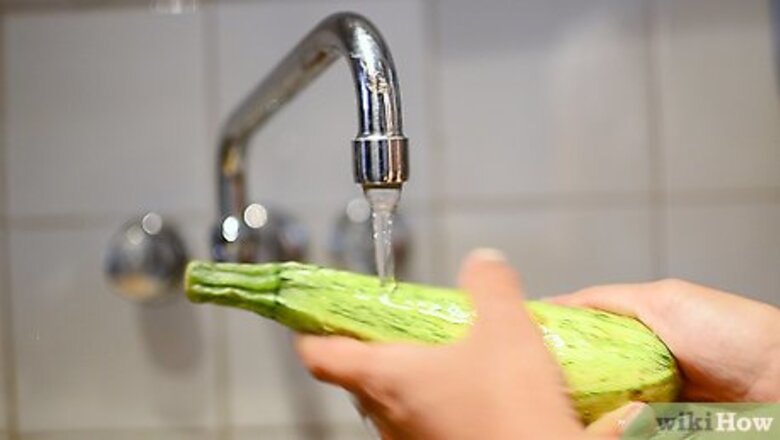
views
X
Research source
However, if you only need to freeze shredded zucchini for future use in recipes like breads or cakes, you can skip the boiling water and still get good results. For convenience, you should freeze your shredded zucchini in measured portions that suit your favorite recipes.
Cleaning and Shredding Zucchini

Wash and dry the zucchini thoroughly. Rinse it under running water and rub off any dirt or debris with your hands or a towel. Then, pat the zucchini dry with paper towels or a clean towel until all surface moisture is removed. A wet zucchini will be slippery and more difficult—and potentially dangerous—to cut and grate.
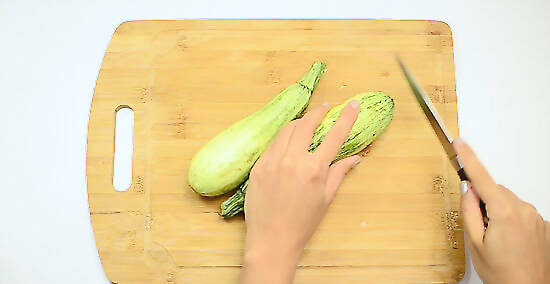
Cut off the top and bottom of the zucchini with a sharp knife. Hold the zucchini firmly against a cutting board with one hand, and chop straight down and through it with the knife. Remove roughly 1 in (2.5 cm) from both the stem end and the opposite end of the zucchini. If the zucchini is more than about 8 in (20 cm) long, cut it in half (into two cylinders) to make it easier to grate. Peeling zucchini isn’t necessary, but if you choose to, simply use a vegetable peeler to remove the skin. It’s great to let kids help in the kitchen, but supervise them very closely if they’re ready to use a knife.
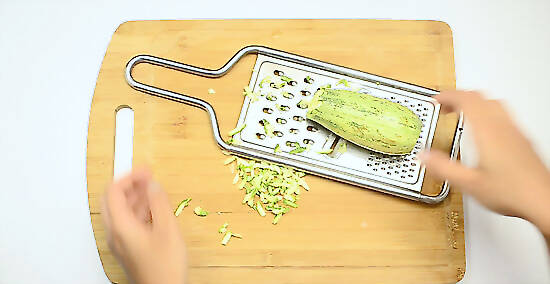
Shred the zucchini with a box grater. Hold the box grater in place with one hand, and use your other hand to press a cut end of the zucchini against one of the grater's sides. Slide the zucchini up and down against the teeth of the grater until your hand is about 1 in (2.5 cm) from the grater's teeth. Discard the remaining zucchini "stump." Once you’re done grating, lift the box grater to reveal a mound of nicely-shredded zucchini. The sides of box graters have different sized teeth that produce finer or coarser shreds. For most recipes calling for shredded zucchini, grating on the side with the largest teeth will do. Some food processors with shredding attachments also do a good job on zucchini, but many end up creating uneven shreds and a lot of mushy pulp.
Freezing Measured Amounts of Zucchini
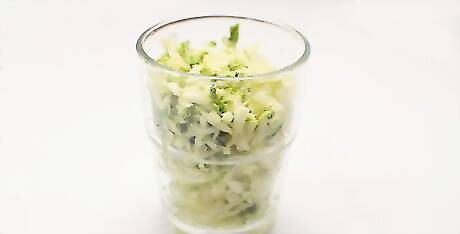
Fill your chosen size of measuring cup with shredded zucchini. Let your favorite recipes dictate how you want to portion out the zucchini. For instance, if you love making a zucchini-banana bread that uses 1 cup of zucchini, fill a 1 cup measuring cup. If you only need half-cup amounts for recipes, use a ½ cup measuring cup. If your recipes use the metric system and measure ingredients like zucchini by weight in grams, you can weigh out your portions on a kitchen scale. If you’re OK with more general measurements, 1 cup equals roughly 225 grams.
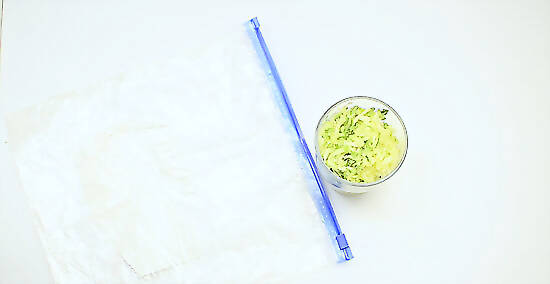
Seal each portioned amount in a zip-close freezer bag. For instance, if you need 2 ½ c (approx. 565 g) for your favorite zucchini bread recipe, add that amount to a single freezer bag. Squeeze out as much air as you can and seal the bag tightly. Freezer bags are thicker and keep air out longer, but you can also try double-bagging the zucchini in standard zip-close sandwich bags.
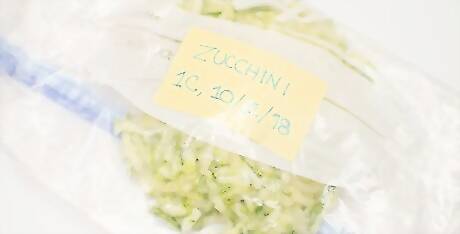
Label each bag of shredded zucchini and freeze them immediately. Clearly write the freezing date and amount of zucchini on each bag with a permanent marker: for instance, “Zucchini, 1 c, 9/17/18.” Then stash your shredded squash in the freezer for later use. Always label the bags, instead of assuming that you'll be able to remember when you put the zucchini in the freezer--or even that you'll be able to tell that it's zucchini in the bags!
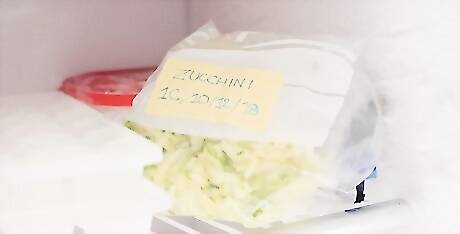
Use your frozen zucchini within 6 weeks for best results. While blanched zucchini will last in the freezer for 3 months before turning mushy and flavorless when thawed, unblanched zucchini should be used within about 6 weeks for best results. If you use a vacuum sealer instead of zip-close freezer bags, unblanched zucchini may last for up to 3 months in the freezer--the same as if you'd blanched them and used freezer bags.
Thawing Zucchini for Use in Recipes
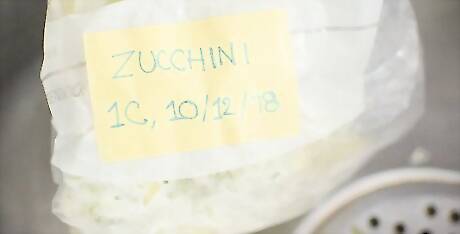
Place the bag of frozen zucchini on the counter for 1-3 hours. 1 cup of zucchini will probably thaw fully in about an hour, while larger amounts (e.g., 2 ½ c) might take several hours. Squeeze the bag every half hour or so to see if the center of the shredded zucchini is still frozen. The zucchini may thaw more quickly if you place it under cool running water. However, make sure the bag is still sealed securely.

Squeeze or strain out the zucchini’s excess water. After it’s thawed, dump the shredded zucchini into a fine mesh strainer (over a bowl or the sink) for 5-10 minutes. Or, wrap it in a piece of cheesecloth or a thin, clean kitchen towel and squeeze out the water with your hands. Most recipes that use fresh shredded zucchini recommend removing the excess water, and thawed zucchini will be even more watery.
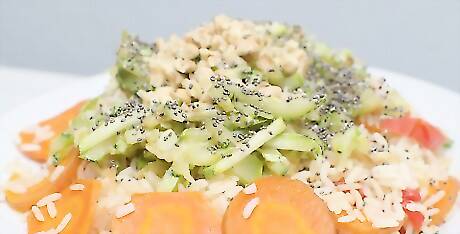
Use thawed zucchini in your recipe just as you would fresh. Particularly when used in baked goods, you shouldn’t notice any difference in flavor or texture between fresh shredded zucchini and frozen. If you’re tired of making variations of zucchini bread, try zucchini pancakes or apple-zucchini muffins instead! The flavor and texture of the zucchini (and the resulting dish) will suffer if it was frozen for more than about 6 weeks, though. Unblanched zucchini shreds won’t produce the right texture for dishes like zucchini noodles. Blanch the zucchini before freezing it or, better yet, use fresh zucchini for these types of dishes.




















Comments
0 comment